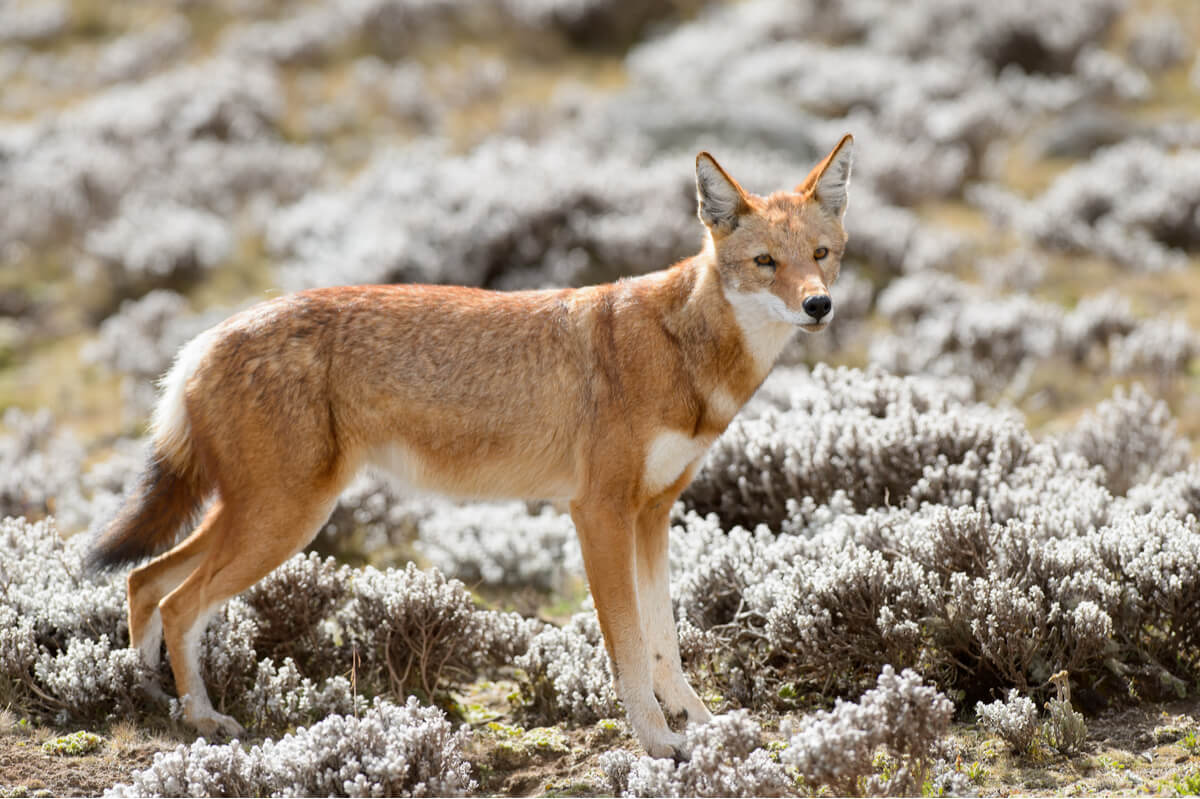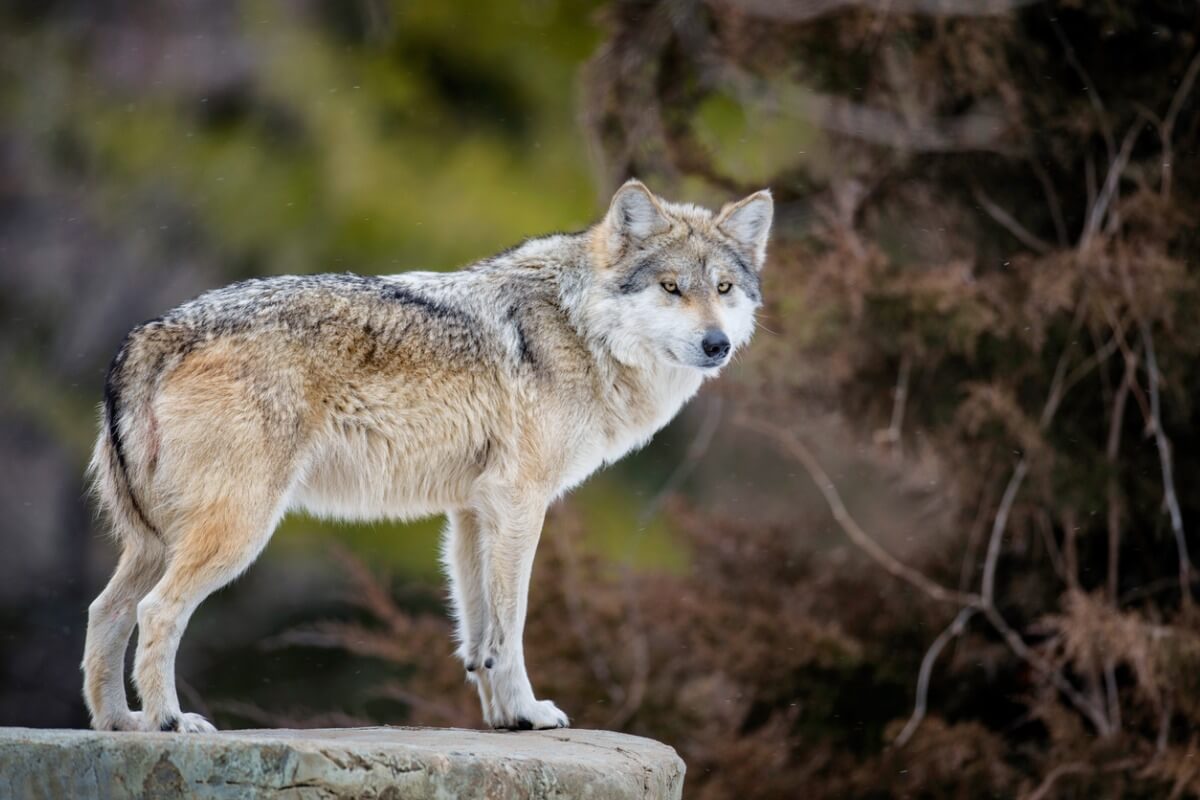5 Curiosities About Wolf Howls

Communication isn’t only important for humans; it forms an important part of animals’ lives too. Although these beings don’t utter sentences or speak like us, they have found ways to communicate to defend their territory, express fear, or find their family. And one of those ways is through sounds, such as the wolf howls.
So, in the following article, we’ll tell you a little about the curious way wolves communicate. Here you’ll discover 5 curiosities about the howls of these wild, intelligent, and territorial animals. Don’t miss it!
Animal language
The sounds that animals emit vary according to the situation they’re in. That’s why, despite not having articulated language, it could be said that, in their eagerness to communicate, they have found ways to make themselves understood. However, animal language is still a mystery that scientists and researchers have tried to look into.
Just as chemistry and vision are part of animal communication, so is hearing. In other words, sounds are important to these beings, both those that come from nature and those that they themselves emit. In this sense, elephants trumpet, bees buzz, horses neigh, and wolves, which are the focus of today’s article, howl.
What are wolves?
Known scientifically as Canis lupus, wolves are carnivorous mammals that belong to the Canidae family and arose almost a million years ago. These animals have highly developed senses; in addition, they can travel long distances and reach a speed of 50 kilometers (31 miles) per hour. It should also be noted that they’re social beings that generally live in groups.

Wolf howls
The scene of a wolf raising its head and pressing its lips to howl in the middle of the forest is something we have all seen in movies, cartoons, music videos, documentaries, and even on book covers. Wolves are known for their powerful howls, but how much do you know about these characteristic sounds?
Although people speak English in different parts of the world, they don’t always use the same accent to do so. The English of the United States is different from the U.K., and even inside the same country the accents vary. Well, it turns out that when howling, these animals, in a similar way to domestic dogs, also have different accents.
Scientists at the University of Cambridge conducted a study with more than 6,000 wolves of different species, inhabiting different parts of the world. This research yielded surprising results about wolf howls. Here are 5 curiosities about these famous sounds.
1. Like fingerprints…
To begin with, it should be pointed out that howls for wolves are like fingerprints for humans. Their howls are so different from one another that wolves are able to tell each other apart thanks to them. In addition, they also vary according to the situation they’re in – for example, telling other wolves where they are, fighting for their territory, or any other type of behavior.
2. Types of howl
As a second curious fact, research at the University of Cambridge managed to compile more than 21 types of howl. According to these scientific researchers, the howls are differentiated by the tone, duration, and timbre used; just as our voice changes when shouting or speaking.
3. Bonding
In addition, it’s worth mentioning that wolves can howl when they’re with the pack or when they’re alone. The sounds emitted by these wild animals don’t only serve to communicate, but also reinforce the bonds between the members of the group and are a demonstration of affection. A wolf is likely to howl in joy because a new litter has been born or in sadness because it has been abandoned.
4. The tones of wolf howls
It’s clear that not all wolves howl the same! In terms of tones, the dominant male or female’s howl tends to be defiant, a confident, long, sustained sound. Whereas wolves that are lower in the hierarchy tend to intersperse the howl with a whine or bark.
5. They emit other sounds

As a further point of interest, it should be noted that the Cambridge University study was carried out with a very sensitive computer that picked up the slightest vibration. Therefore, it was discovered that apart from howling, these animals emit growls and barks, especially when they feel threatened or in danger.
In conclusion, howling is a fundamental way of communication among wolves. In addition, they are sounds that provide identity to these animals, as they have different tones and accents. Thanks to howling, wolves can express affection, be found by the pack, or defend their territory.
All cited sources were thoroughly reviewed by our team to ensure their quality, reliability, currency, and validity. The bibliography of this article was considered reliable and of academic or scientific accuracy.
- Lenguaje animal. Sistema de Información Científica Redalyc. Recogido el 15 de abril de 2022 de: https://www.redalyc.org/pdf/1892/189250583003.pdf
- Canis lupus. Repositorio institucional del Consejo Superior de Investigaciones Científicas. Recogido el 15 de abril de 2022 de: https://digital.csic.es/bitstream/10261/112313/1/canlup_v4.pdf
This text is provided for informational purposes only and does not replace consultation with a professional. If in doubt, consult your specialist.